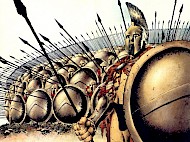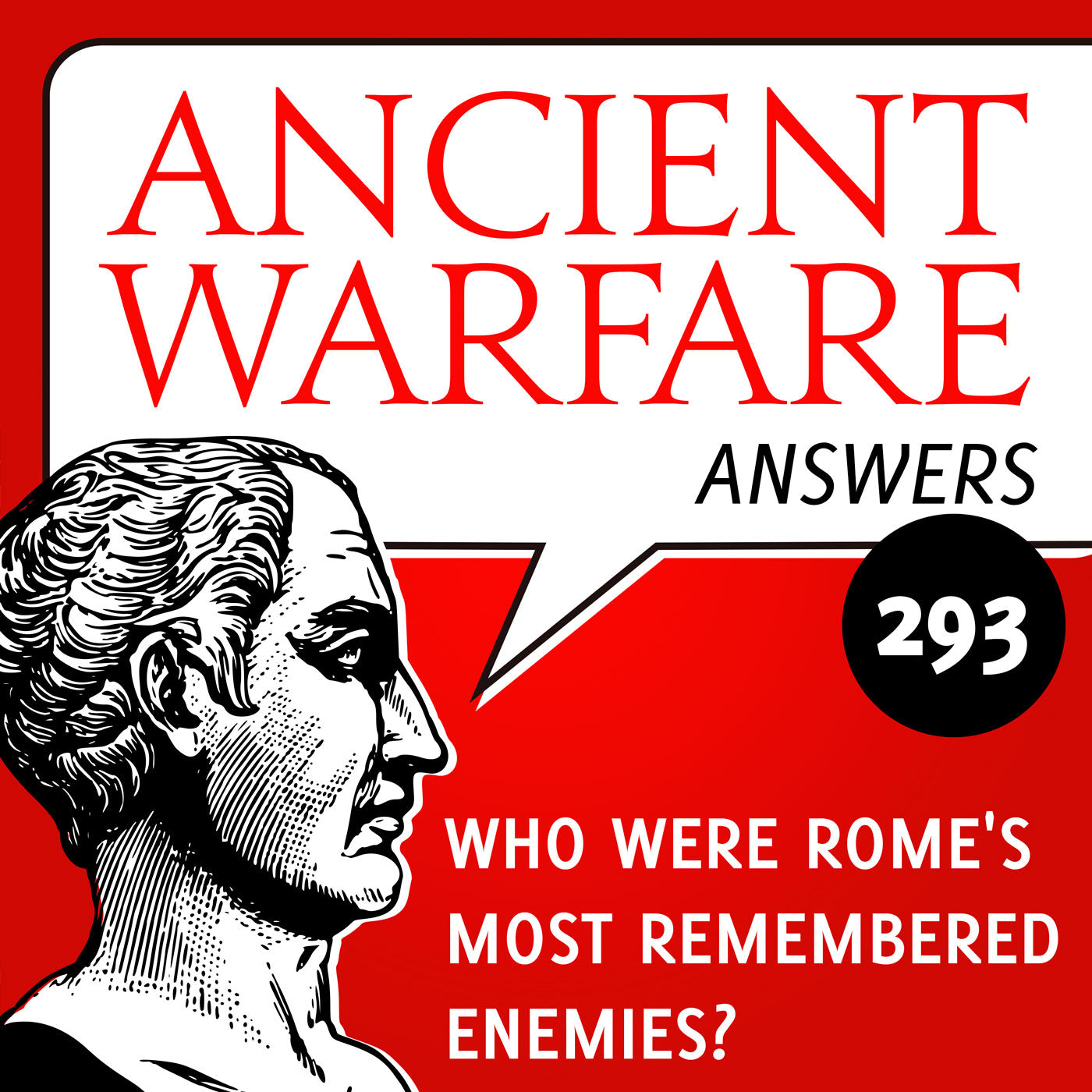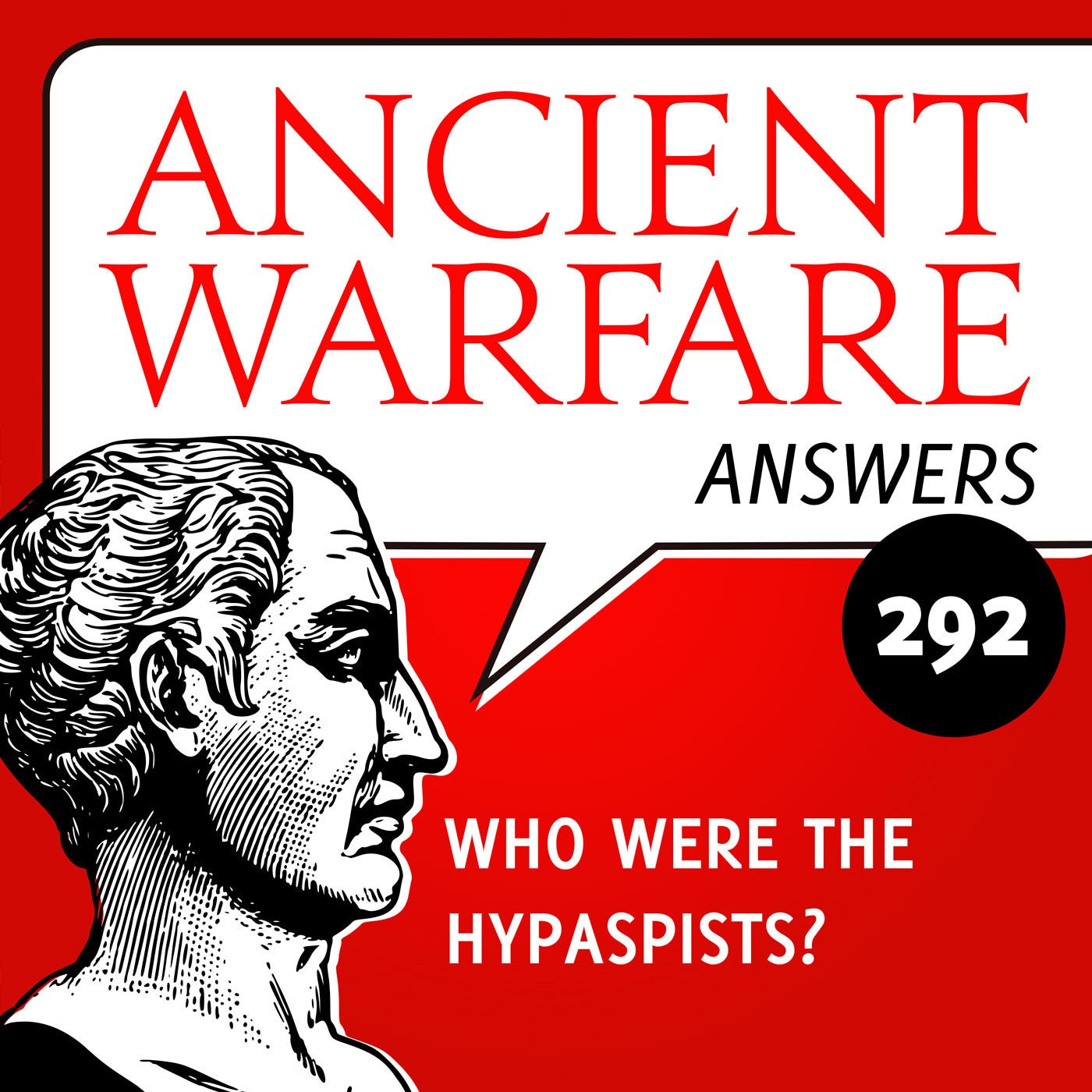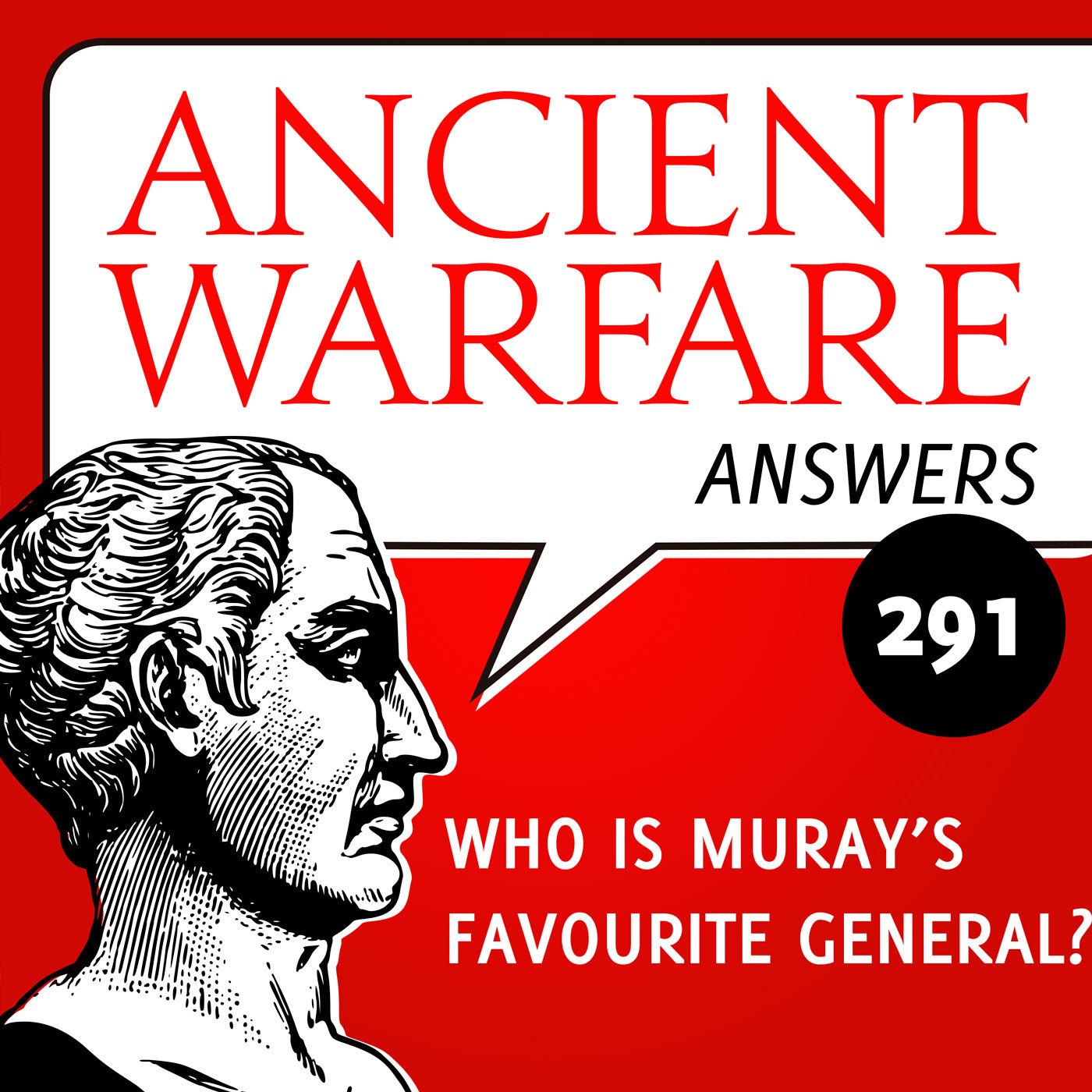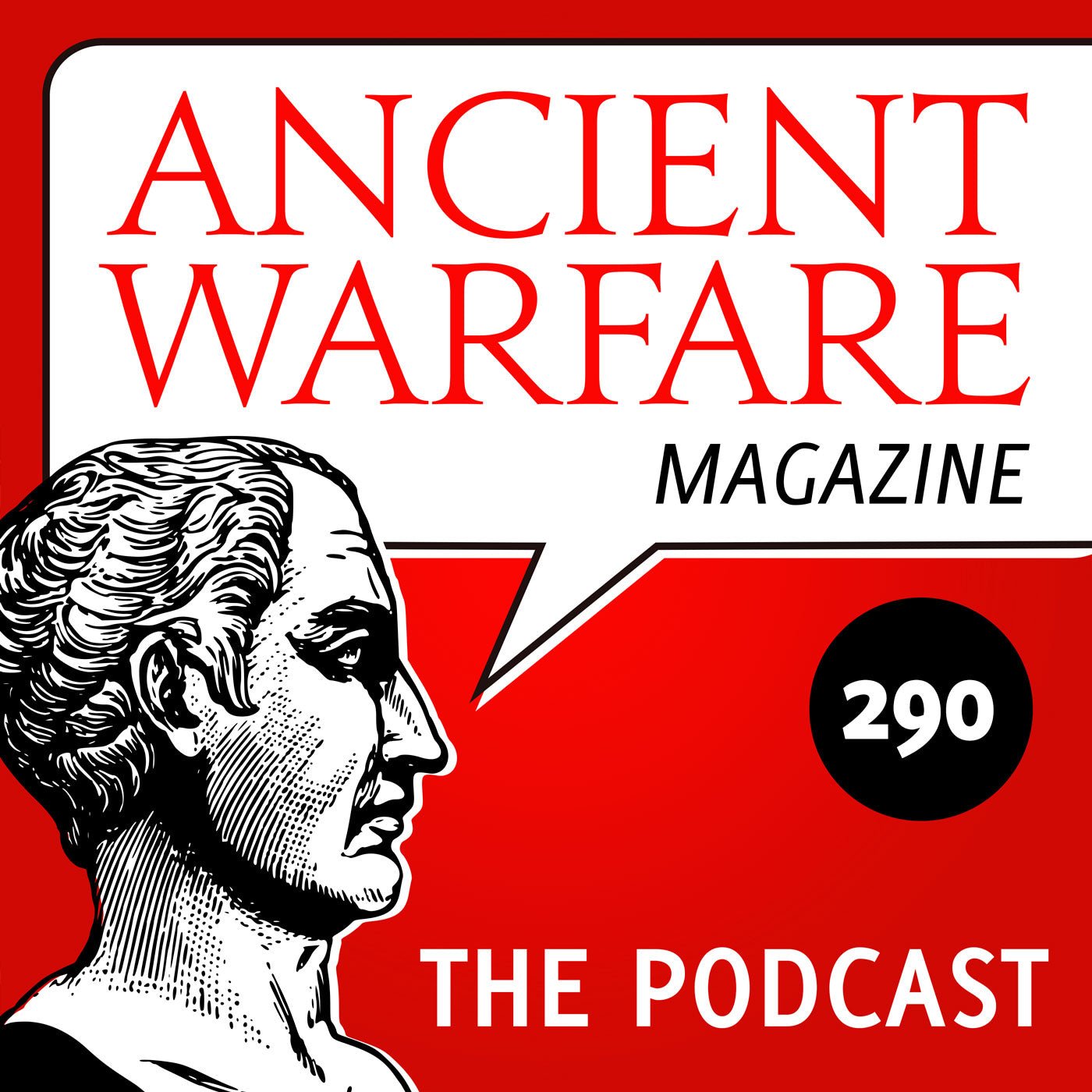300: The good, the bad and the ugly (part 2)
This is the second of three blog posts on the movie 300 (2006). In the first part, I focused largely on the good aspects of the movie. In this blog entry, my focus is largely on what they did wrong, with an emphasis on factual errors and anachronisms, avoiding those problems that have already been touched upon in the previous post. The offensively bad mistakes and misrepresentations will be dealt with in part three, which will be posted tomorrow.
Omissions and unnecessary additions
The movie’s main character is the Spartan king, Leonidas. Kingship had largely died out shortly before or in the early stages of the Archaic period (ca. 800500 BC), replaced in most city-states by oligarchies and especially aristocracies. Sparta was even stranger because it had not one king, but two. The origins of this diarchy are obscure and the movie and comic book ignore this aspect completely in favour of a solitary king, no doubt to avoid confusing general audiences.
The movie adds an entirely superfluous political plot in an attempt to give Queen Gorgo (Lena Heady) something more to do than just wave her husband goodbye. A character by the name of Theron (Dominic West) attempts to sow discord and is discovered to have been paid off by the Persians. This subplot adds a lot of unnecessary filler; it would have been better if the makers had stuck more closely to the original comic book.
There are a few times that the movie adds unnecessary elements to the original story, most of which have a detrimental effect on the final product. At around the 30-minute mark, the Spartans and their allies arrive at a village that has been destroyed by the Persians. A small child emerges and collapses in the arms of Leonidas. However, this scene makes no sense: how could the Persians have penetrated this far south into Greece? One of the Spartans mumbles that it must have been a “scouting party”, but the purpose of a reconnaissance party is to scout out the countryside, not to destroy entire villages. When the Greeks discover that the bodies of the villagers were nailed to a tree, they realize that it must have been the Immortals, which makes even less sense.
Other additions are equally redundant. At one point, the comic book depicts a battle against elephants, but the movie adds a rhinoceros to the equation. We know that the Persians used elephants in the Battle of Gaugamela (331 BC), and it has been suggested that even Darius I already used them in battle, but they are not attested in Herodotus’ account of the Battle of Thermopylae. Rhinos were not used in battle at all. Similarly, the so-called “Über-Immortal”, a gigantic manlike creature that Leonidas fights at one point, is entirely fantastic.
Of course, at this point some may point out that the story is told by Dilios, who we can perhaps regard as an unreliable narrator. However, this is rendered moot whenever the story cuts back to Sparta, and it is obvious that in the movie, at least, we are following the story as it was supposed to have happened. Indeed, some elements Dilios could never have known, including the death of Leonidas and the 300 Spartans.
One final point where the movie deliberately deviates from the comic book is in its depiction of battle. Both contain a scene in which Ephialtes makes clear that he would like to serve Sparta, but his deformity makes him unable to function properly in the phalanx. The phalanx, as Leonidas points out, is what gives the Spartan army its strength. The cohesion of the phalanx is stressed in both the comic book and the movie, but in a few cases director Zack Snyder opts to show the Spartans breaking ranks and engaging the Persians directly. In one case, this even results in the death of one of the Spartans an element of drama wholly absent from the comic book.
Errors and anachronisms
The Spartans are portrayed as a warrior culture. This is true to the original sources, even though they are likely to have exaggerated the warlike aspects of Sparta society. But the heavy emphasis that the movie in particular places on the idea of Spartans as “free men” obscures the fact that this freedom was limited to male Spartiates, i.e. citizens. These Spartiates were able to devote their time to warfare because they had, at some unknown point between ca. 800 and 500 BC, conquered the territory of Messenia and reduced its inhabitants to the status of helots, a kind of serfs. The Spartan poet Tyrtaeus describes them as suffering “like donkeys under heavy loads” (fr. 6 West).
The helots were obliged to work the land of the Spartiates, who in turn had to devote all their time to mastering the arts of war in order to keep the helots in check. (By the way, the single most useful book on ancient Spartan society, to my mind, is D.M. MacDowell’s Spartan Law (1986). Unlike a lot of other books on ancient Sparta, MacDowell bases his work entirely on a detailed study of the ancient sources with particular emphasis on the law, offering a solid and reliable starting point for further study.)
Furthermore, those who lived outside of Sparta, in the many other towns and villages of Laconia, were known as perioikoi, “dwellers about”. They were relatively free, but obliged to pay taxes and serve in the military. The comic book and movie entirely ignores both the helots and the perioeci and, especially the movie version, instead presents Spartan military society as some kind of beacon of justice and freedom.
I have already touched upon the absence of a second king in 300, but at least Leonidas is given a courtesy that did not extend to the poor ephors. In ancient Sparta, these were powerful magistrates that shared power with the Spartan kings. They were elected by the popular assembly and some later Athenian writers believed that political power was largely vested in them rather than the kings. However, the book and movie present the ephors as “Priests to the old gods. Inbred swine whom even the king must bribe and beg.” They also seem to hold an “oracle” captive, another completely unnecessary fabrication.
Finally, let’s have a look at the military dress of the Spartans, or their lack of it. The Spartans wear small leather Speedos and red capes. In the comic book, they are even shown naked. While their lack of attire is probably inspired by Greek vase-paintings of naked warriors, it is unlikely that the Greeks themselves fought naked. Instead, one would expect the Spartans to have worn tunics and bronze bell-shaped cuirasses or linen corslets.
Other elements of the equipment depicted in the book and movie are not entirely correct: the swords are not of any recognizable type, the Corinthian helmets have a strange frontal plate and the shields seem very roughly finished. Furthermore, use of the lambda (Greek for L, representing Lacedaemonia) as a shield emblem is not attested until the Peloponnesian Wars, or some fifty years after Thermopylae. By the time of the Persian Wars, the Spartans would have used shields with various types of blazons depicting, for example, animals, mythological monsters, or more abstract figures. The shields in the comic book and the movie are thus somewhat odd-looking and anachronistic.
The depiction of Persian arms and armour is patently ridiculous. However, this is a point that I will return to in my third and final blog post, which will go online tomorrow.

